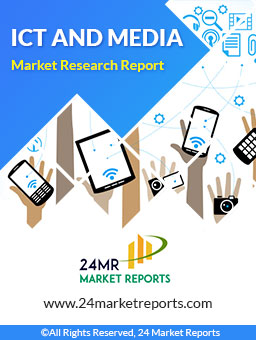
COMPANIES COVERED
AdvancedMDDownload FREE Report Sample
Download Free sampleElectronic Medical Record (EMR) Software is a digital solution designed to manage patient health information in an electronic format within medical practices, clinics, and hospitals. EMRs replace traditional paper charts and store a wide array of patient data, including medical history, diagnoses, medications, immunization dates, allergies, lab results, and physician notes. These systems integrate both administrative and clinical components of healthcare operations, enabling streamlined workflows, better patient care, and regulatory compliance.
EMR software is used for internal documentation within healthcare settings and is primarily designed for use by clinicians, administrative staff, and health IT teams. Unlike Electronic Health Records (EHRs), which are designed to share information across organizations, EMRs are typically confined to a single practice or facility.
Market Size
The global Electronic Medical Record (EMR) Software market was estimated at USD 10,090 million in 2024 and is projected to reach USD 13,751.63 million by 2032, growing at a CAGR of 3.50% over the forecast period.
In North America, the market size was valued at USD 2,789.28 million in 2024, with a projected CAGR of 3.00% from 2025 to 2032.
This steady growth reflects the increasing adoption of digital health technologies, federal mandates encouraging digitization, and the rising demand for integrated healthcare services.
Key factors contributing to the market size include:
To know more about market statistics, Download a FREE Sample copy
Increasing healthcare IT spending.
Government initiatives promoting EMR adoption.
Growing need for patient data management and analytics.
Rise in telemedicine and remote patient monitoring systems post-COVID-19.
Market Dynamics (Drivers, Restraints, Opportunities, and Challenges)
Drivers
Government Incentives and Mandates: Many countries, especially in North America and Europe, have implemented programs to promote the use of EMRs. For instance, the HITECH Act in the U.S. significantly accelerated EMR adoption.
Operational Efficiency and Cost Reduction: EMRs reduce administrative burdens and errors, thus saving time and operational costs for healthcare providers.
Increased Need for Integrated Healthcare Systems: The growing demand for centralized patient information systems across various healthcare services is boosting EMR software deployment.
Growing Aging Population and Chronic Diseases: The rise in geriatric populations and chronic disease cases necessitates comprehensive and accessible medical records.
Restraints
High Implementation Costs: Small and medium-sized healthcare facilities often find the cost of EMR installation, training, and maintenance prohibitive.
Interoperability Issues: Integration across different EMR platforms and between EMR and non-EMR systems remains a challenge.
Privacy and Security Concerns: The digitization of medical records introduces vulnerabilities that may be exploited by cyberattacks.
Opportunities
Cloud-Based EMR Solutions: With lower upfront costs and better scalability, cloud-based EMRs are increasingly favored by smaller practices and emerging markets.
AI and Data Analytics Integration: Leveraging AI for predictive analytics and decision-making within EMR systems offers significant potential.
Expansion in Emerging Markets: Developing countries are now investing in healthcare infrastructure, including EMR systems.
Challenges
User Resistance and Training Needs: Resistance to change among healthcare staff and the need for extensive training hinder smooth implementation.
Lack of Standardization: Disparate healthcare regulations and data standards across regions complicate EMR adoption.
Regional Analysis
North America
North America holds the largest share of the EMR software market, driven by advanced healthcare infrastructure, strong regulatory mandates, and high digital literacy. The U.S., in particular, is a frontrunner due to the Affordable Care Act and Meaningful Use incentives.
Europe
Europe follows closely behind, with nations such as the UK, Germany, and France heavily investing in digital health. The EU's stringent data protection laws (like GDPR) also necessitate robust EMR systems for compliance.
Asia-Pacific
This region is expected to witness the fastest growth due to expanding healthcare infrastructure in countries like China and India. Government eHealth initiatives and increasing private sector involvement further contribute to this trend.
South America
The market is gradually expanding with Brazil and Argentina adopting EMR systems across public and private healthcare sectors. However, limited funding and infrastructure remain barriers.
Middle East and Africa
The MEA region is experiencing steady growth, particularly in the UAE and Saudi Arabia. Investments in smart healthcare facilities and digitization programs are encouraging EMR adoption.
Competitor Analysis (in brief)
The EMR software market is moderately fragmented, with both large-scale multinational companies and niche players. Competitive strategies include product innovation, cloud service offerings, acquisitions, and partnerships.
EpicCare and Cerner dominate in large hospital settings.
AdvancedMD and NueMD cater more to small and medium practices.
Allscripts, GE, and McKesson offer comprehensive solutions with cross-platform compatibility.
Emerging players like Elation Health and LeonardoMD are focusing on usability and niche market segments.
Global Electronic Medical Record (EMR) Software Market: Market Segmentation Analysis
Electronic Medical Record Software Market provides a deep insight into the global Electronic Medical Record (EMR) Software market, covering all its essential aspects. This ranges from a macro overview of the market to micro details of the market size, competitive landscape, development trend, niche market, key market drivers and challenges, SWOT analysis, value chain analysis, etc.
The analysis helps the reader to shape the competition within the industries and strategies for the competitive environment to enhance the potential profit. Furthermore, it provides a simple framework for evaluating and assessing the position of the business organization. The report structure also focuses on the competitive landscape of the Global Electronic Medical Record (EMR) Software Market. Electronic Medical Record Software Market introduces in detail the market share, market performance, product situation, operation situation, etc., of the main players, which helps the readers in the industry to identify the main competitors and deeply understand the competition pattern of the market.
In a word, Electronic Medical Record Software Market is a must-read for industry players, investors, researchers, consultants, business strategists, and all those who have any kind of stake or are planning to foray into the Electronic Medical Record (EMR) Software market in any manner.
Market Segmentation (by Application)
Market Segmentation (by Type)
Key Company
Geographic Segmentation
North America (USA, Canada, Mexico)
Europe (Germany, UK, France, Russia, Italy, Rest of Europe)
Asia-Pacific (China, Japan, South Korea, India, Southeast Asia, Rest of Asia-Pacific)
South America (Brazil, Argentina, Columbia, Rest of South America)
The Middle East and Africa (Saudi Arabia, UAE, Egypt, Nigeria, South Africa, Rest of MEA)
FAQ Section
What is the current market size of the Electronic Medical Record (EMR) Software market?
The global EMR Software market was valued at USD 10,090 million in 2024 and is projected to reach USD 13,751.63 million by 2032.
Which are the key companies operating in the Electronic Medical Record (EMR) Software market?
Key companies include EpicCare, Cerner, AdvancedMD, Allscripts, McKesson, NueMD, and GE among others.
What are the key growth drivers in the Electronic Medical Record (EMR) Software market?
Major growth drivers include government mandates, the need for operational efficiency, and increasing demand for integrated digital healthcare systems.
Which regions dominate the Electronic Medical Record (EMR) Software market?
North America leads the market, followed by Europe and the Asia-Pacific region.
What are the emerging trends in the Electronic Medical Record (EMR) Software market?
Trends include the adoption of cloud-based solutions, integration of AI and analytics, and increasing penetration in emerging markets.
Key Benefits of This Market Research:
Key Reasons to Buy this Report:
Customization of the Report
Chapter Outline

Speak to our Custom Research Team and get the Custom Research in a budget
Custom ResearchFrequently Asked Questions ?
A license granted to one user. Rules or conditions might be applied for e.g. the use of electric files (PDFs) or printings, depending on product.
A license granted to multiple users.
A license granted to a single business site/establishment.
A license granted to all employees within organisation access to the product.
Upto Working 24 to 48 hrs
Upto 72 hrs max - Weekends and Public Holidays
Online Payments with PayPal and CCavenue
Wire Transfer/Bank Transfer
Hard Copy




 Industry Market Size
Industry Market Size SWOT Analysis
SWOT Analysis Industry Major Players
Industry Major Players Revenue Forecasts
Revenue Forecasts Historical and Forecast Growth
Historical and Forecast Growth Profitability Analysis
Profitability Analysis
























